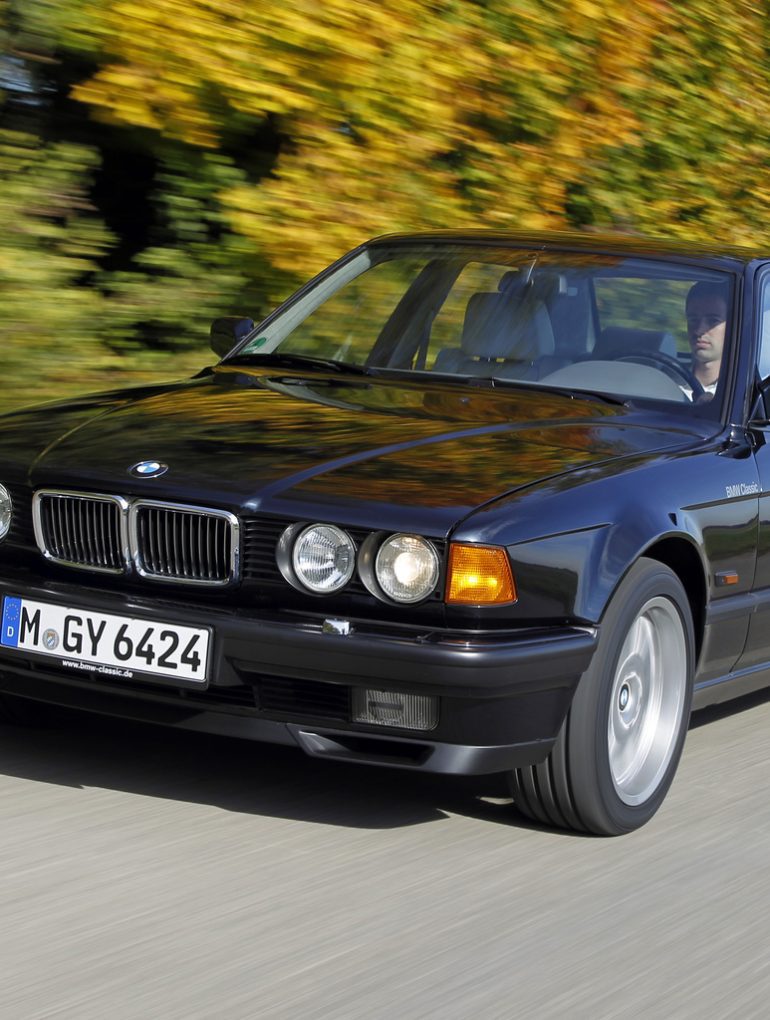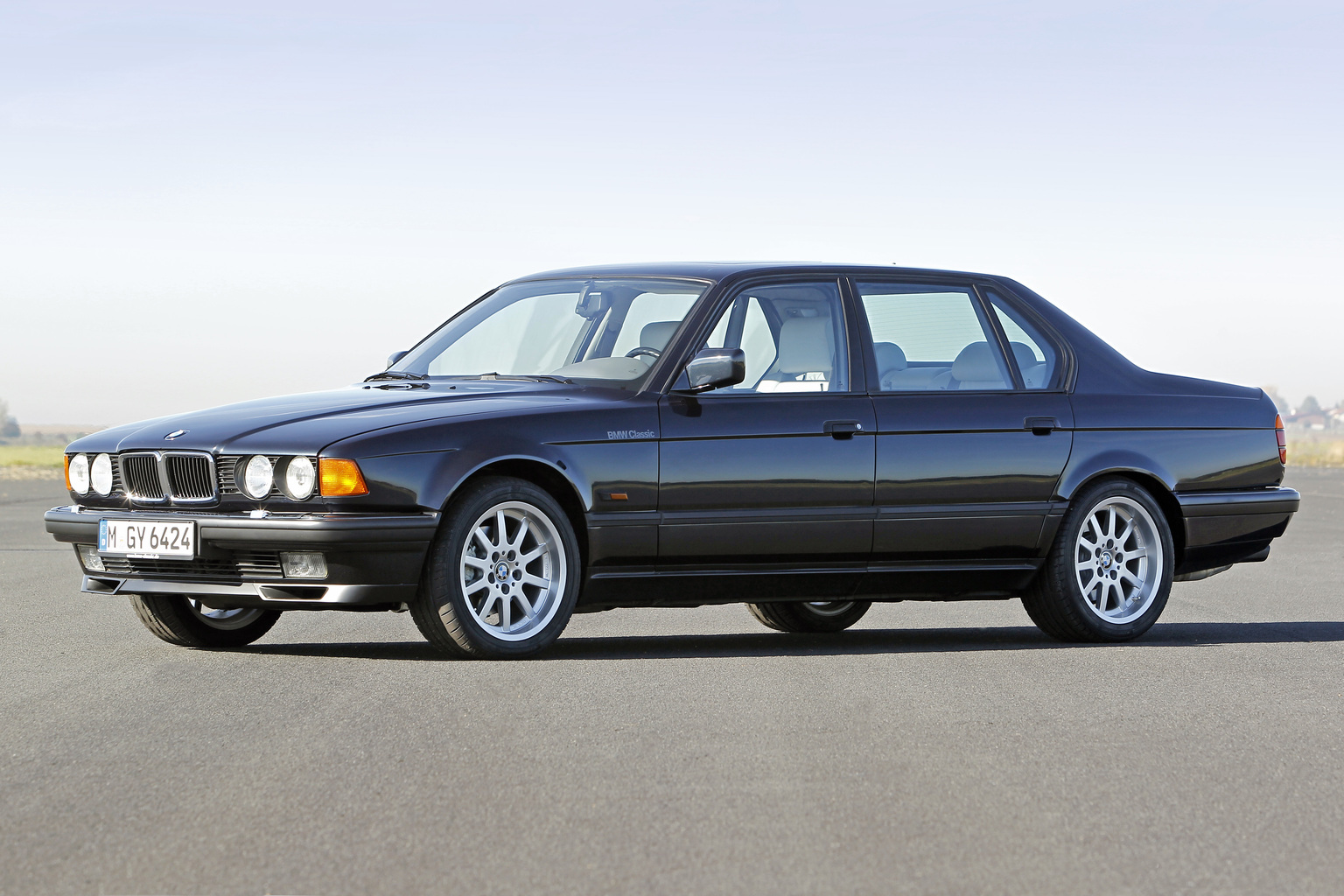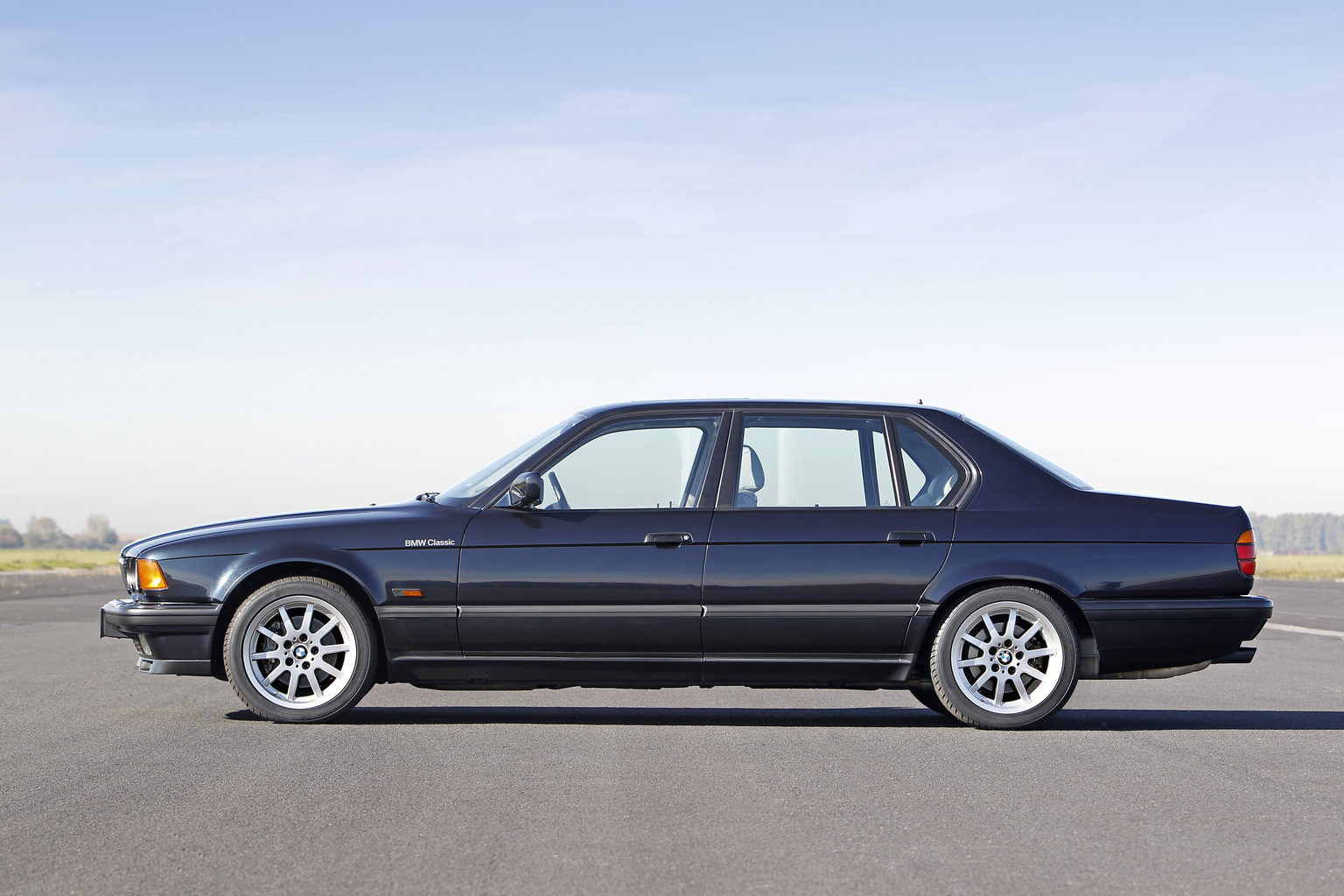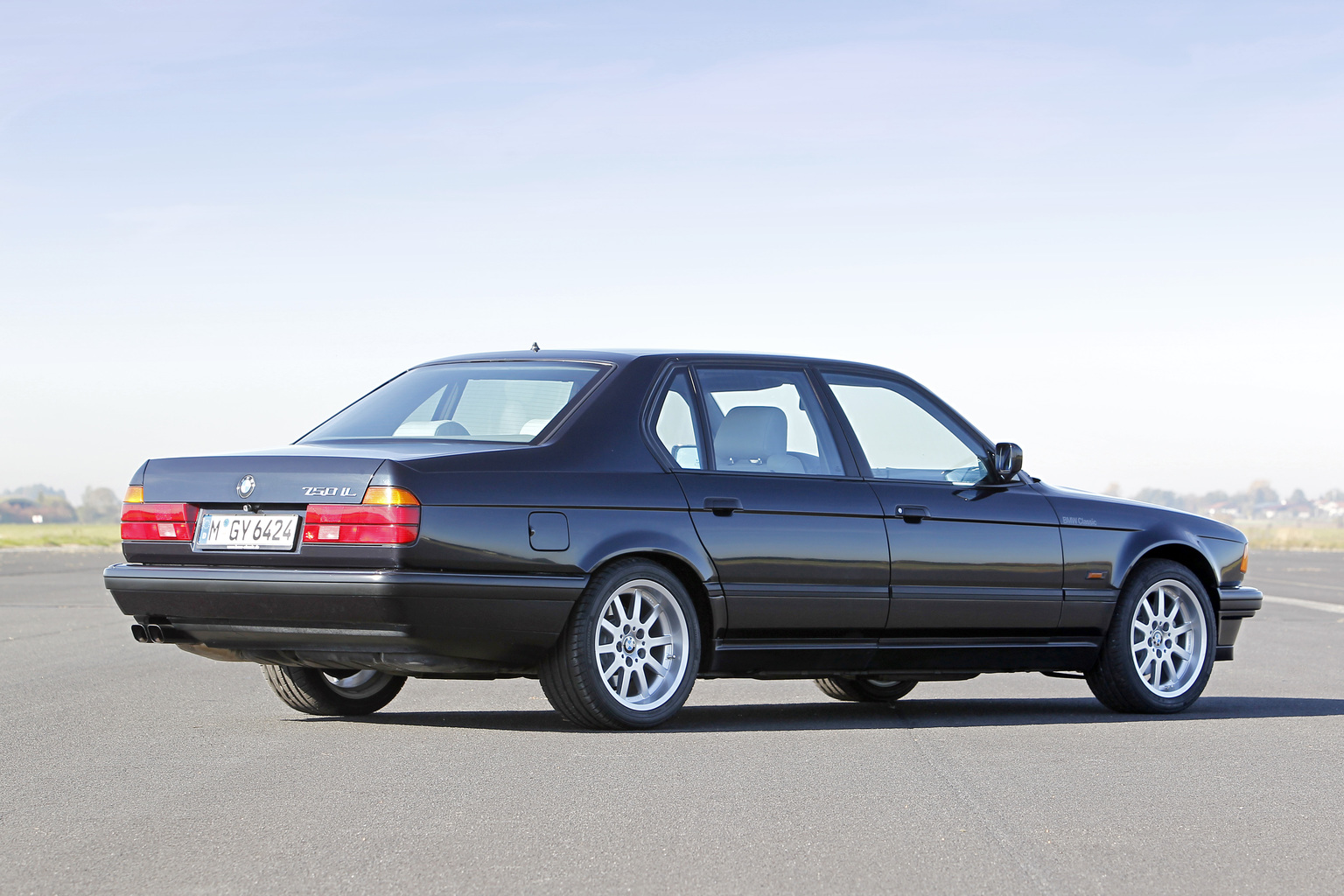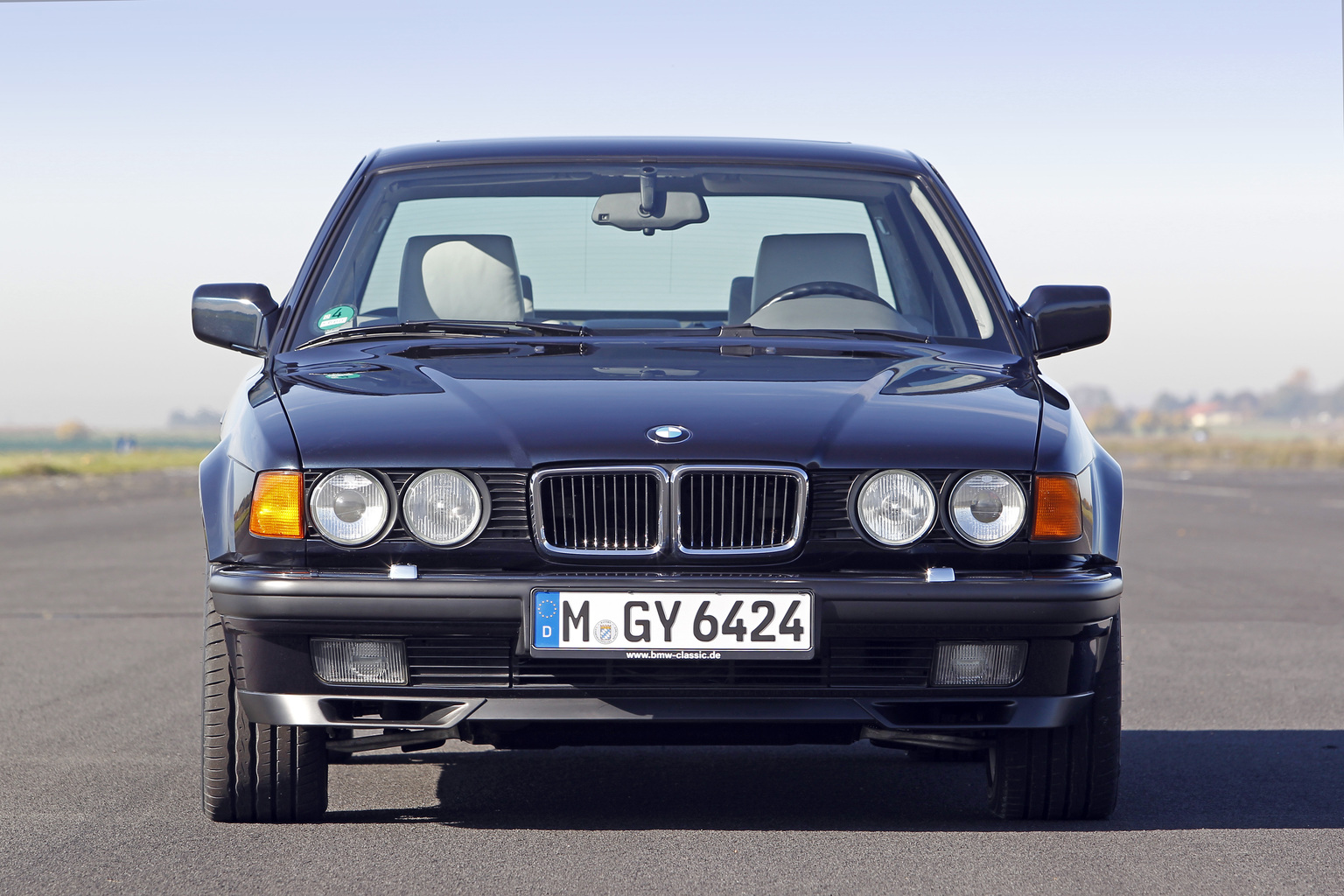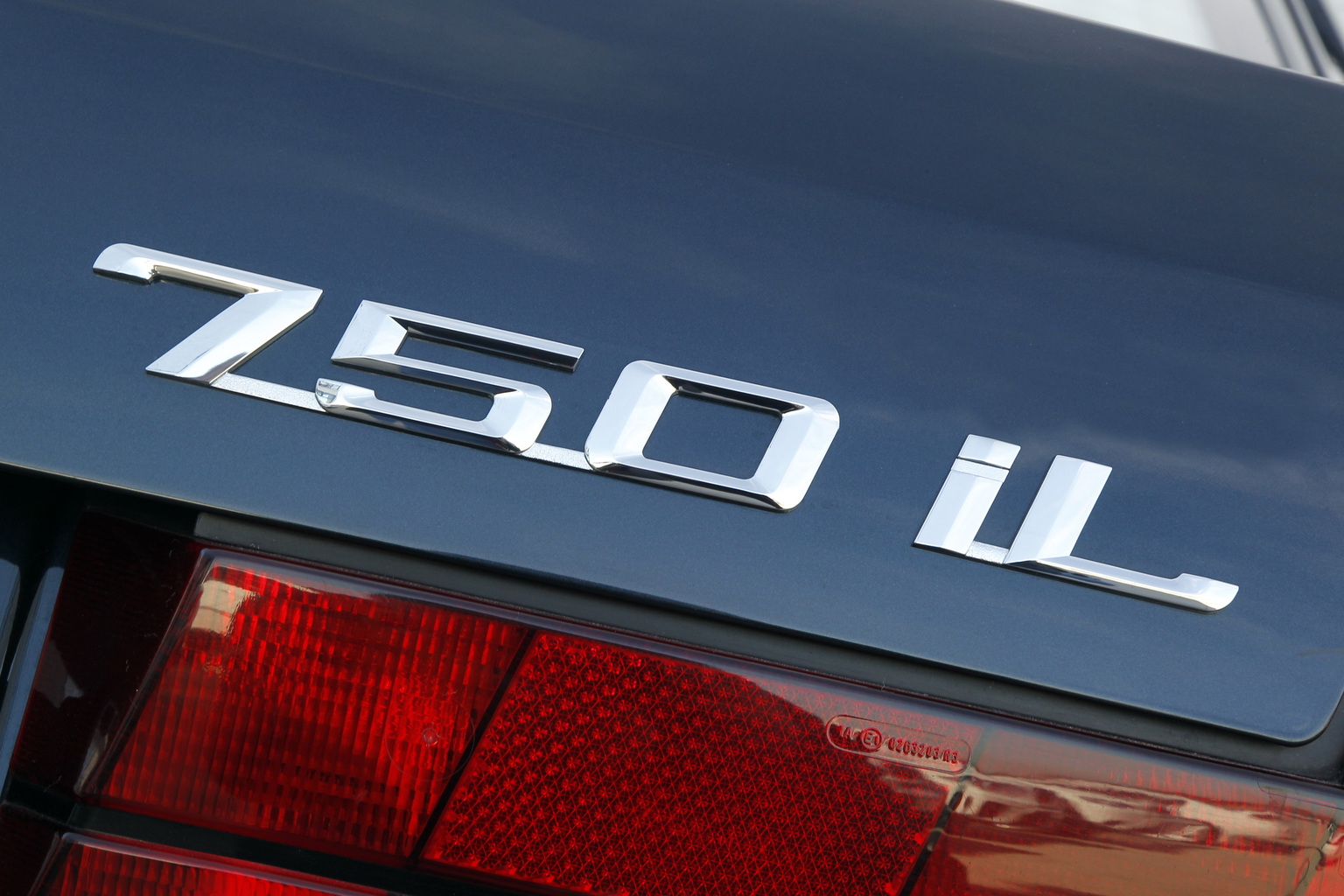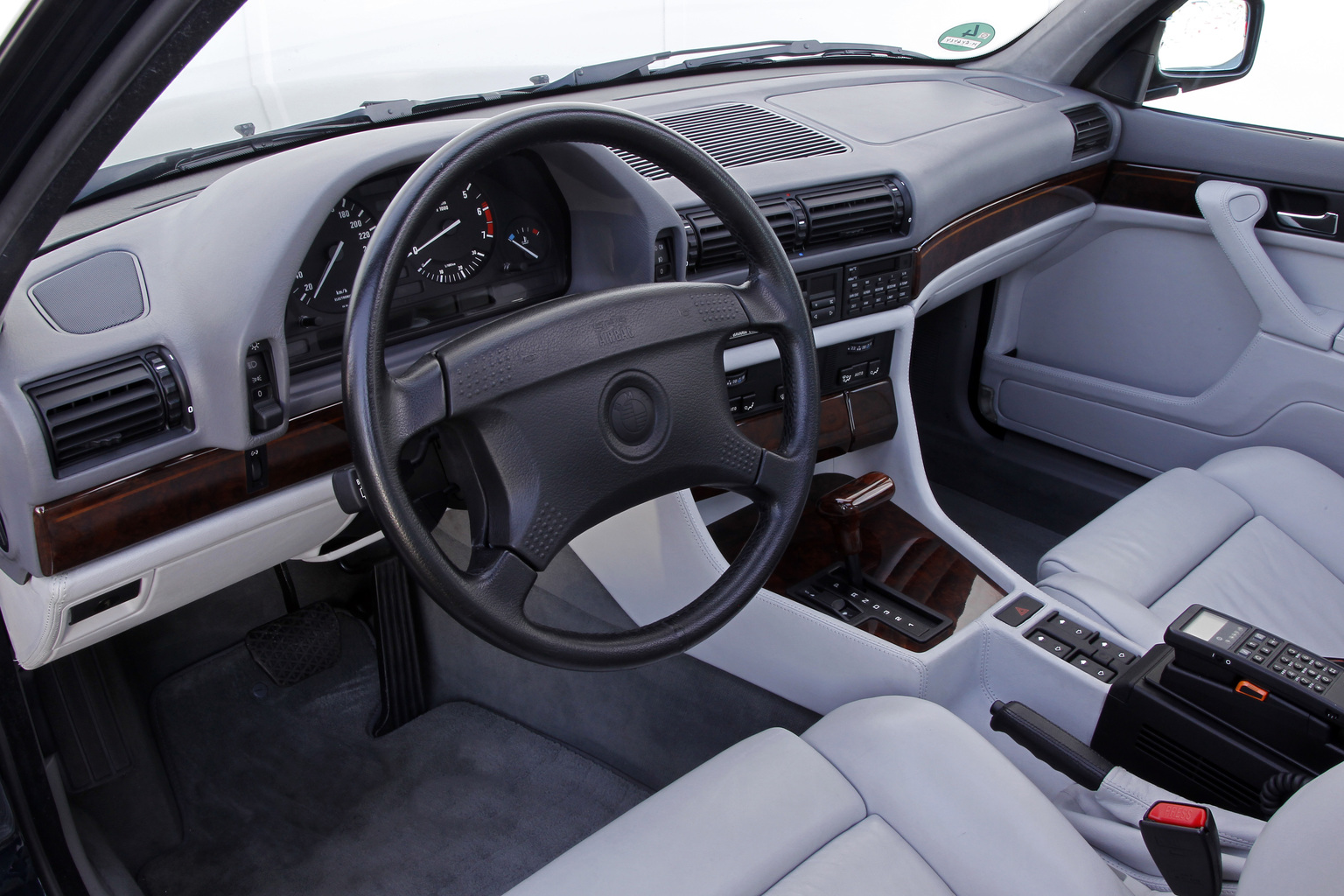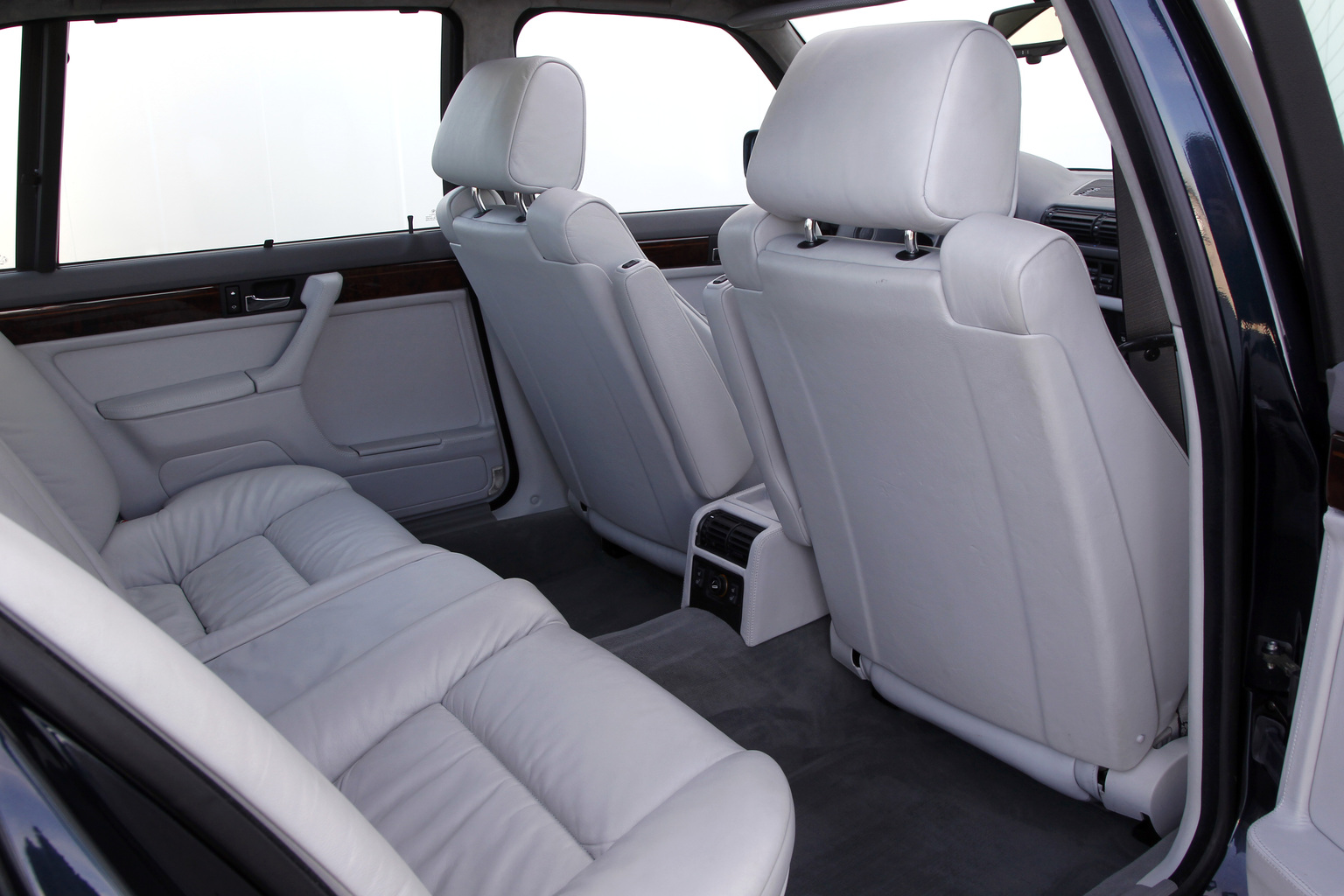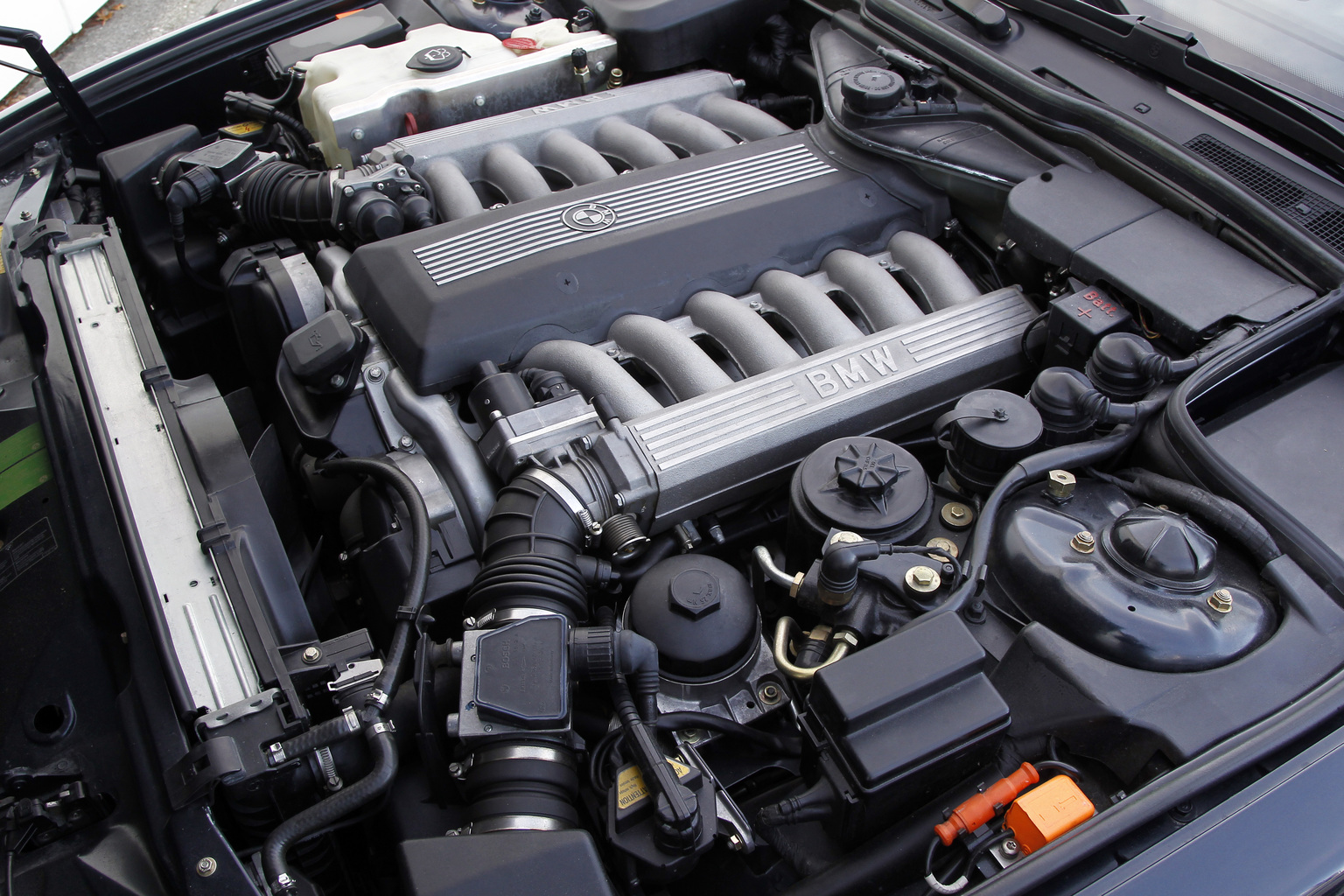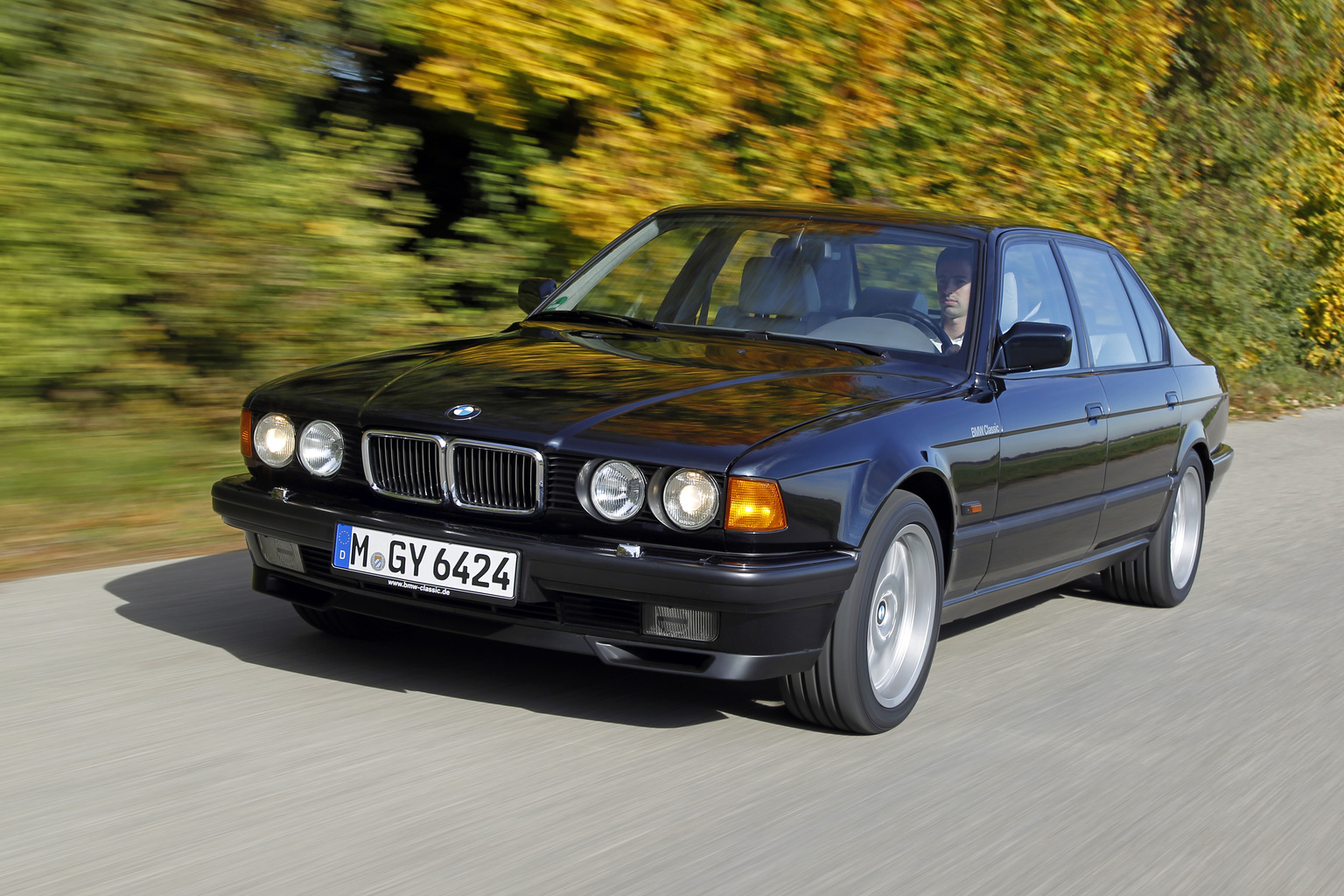1986 BMW 750iL
BMW’s second-generation 7 Series, unveiled in 1986, featured two new top-of-the-range sedans whose formidable six-cylinder in-line engines generated universal enthusiasm in the motoring media. Nevertheless, it was an open secret that an even bigger star was waiting in the wings: the first German 12-cylinder luxury model in half a century.
Expectations were running high, fuelled by BMW’s release of various advance details of the new model’s technical specifications. In September 1986, one news magazine informed its readers: “BMW will be opting for an aero engine-style design. That means most engine systems on the 12-cylinder 7 Series model, which is due for market release in June 1987, will be duplicated. There will even be two lambda sensors. And even if half the engine capacity failed, for some reason, speeds of over 200 km/h would be possible even on just six cylinders.” Last but not least, BMW’s development chief at the time was quoted as saying: “if the engineers wanted to go for nothing but the best of everything, we didn’t try to stop them.”
The rumour mill was rife with speculation about the future top-of-the-line engine’s capabilities. One story doing the rounds claimed that: “BMW is doing everything it can to promote a sense of exclusiveness and cachet. They even want the licensing authorities to allow them to state the performance not in figures but in words – to the effect that the engine is appropriate in power and performance for the requirements of the vehicle.”
In February 1987, BMW finally put an end to the speculation and released the technical specifications of the 12-cylinder engine in the new BMW 750i, ahead of its world debut at the Geneva Motor Show the following month. The new engine, which had been designed completely from scratch, would develop 300 horsepower from a displacement of five litres. Its refinement, low noise levels and excellent balance between performance and fuel consumption set new benchmarks in engine design. These objectives were achieved by using state-of-the-art technologies and a raft of innovative ideas right across the board. In short, the BMW 750i’s 12-cylinder engine had been built with the aim of setting a new and groundbreaking benchmark that would occupy the highest echelons of automotive engineering.
Over 3,000 pre-orders
The motoring media had no doubts at all. The 12-cylinder engine, seen first-hand at last in Geneva, was “definitely the finest engine ever built by the Munich engine plant”. Visitors flocked to admire a compact exhibit comprising the V12 engine, transmission block and front axle. Illuminated display boards revealed the advantages of this engineering masterpiece such as its “unlimited power combined with silky-smooth running”. This was illustrated by a picture showing “coins balanced on the engine block which remained upright even when the engine was running”.
The market – and not just confirmed BMW customers – had long been waiting for a luxury sedan like this: the sales office had received over 3,000 pre-orders even before the first official showing of the BMW 750i. And in due course, just 10 months after the launch of the first models in the new BMW 7 Series, the new flagship 12-cylinder model joined the range as well. It was offered in two versions: the 750i and the 750iL long-wheelbase version. Both were a class apart: an all-new vehicle as impressive in terms of individual details as in its overall balance, and harmoniously mated with an engine of unprecedented power and refinement. At the same time there was no denying the close affinity between the 750i and its two six-cylinder siblings, the 730i and 735i. The timelessly modern sedan, with its elegant, crisp, uncluttered lines, epitomised the distinguished sporty elegance of the new 7 Series. Nevertheless, small but subtle differences set the flagship model apart.
wider twin-kidney grille
It was the frontal view of the 12-cylinder model that was most distinctive. The BMW twin-kidney grille and the vent on the bonnet were considerably wider than on the other models due to the increased cooling requirements, further accentuating the dynamic elegance of the 12-cylinder model. The six- and 12-cylinder 7 Series models could also be told apart by their tailpipes, which on the 750i were squared off, symbolically echoing the kidney grille at the front.
The long-wheelbase 750iL was particularly distinguished and elegant in appearance. Not only was it 114 millimetres longer than the other 12-cylinder model, its lines were even more refined and – a particularly important requirement – it offered easier boarding and alighting for passengers as well as even more generous space at the rear. The extra length was added in the rear door area, leaving the front and rear overhangs untouched. The big advantage of this solution was that it left the weight distribution between the front and rear axles largely unchanged. As a result, the excellent handling of the BMW 7 Series in general was a hallmark of the long-wheelbase version too. It boasted what all the experts had cited about the other 7 Series models too: it combined the spaciousness of a luxury sedan with the easy handling of a compact car. So even in this BMW segment, the accent remained firmly on driving enjoyment.
In Detail
| type | Series Production Car |
| production years | 1986 – 1994 |
| built at | Dingolfing, Germany |
| body stylist | Ercole Spada |
| engine | M70B50 V12 |
| position | Front, Longitudinal |
| valvetrain | SOHC |
| displacement | 4988 cc / 304.39 in³ |
| bore | 84 mm / 3.31 in |
| stroke | 75 mm / 2.95 in |
| compression | 8.8:1 |
| power | 220 kw / 295.0 bhp @ 5200 rpm |
| specific output | 59.14 bhp per litre |
| bhp/weight | 152.85 bhp per tonne |
| torque | 450 nm / 331.9 ft lbs @ 4100 rpm |
| body / frame | Unitary Steel Monocoque |
| driven wheels | RWD |
| curb weight | 1930 kg / 4256 lbs |
| wheelbase | 2947 mm / 116.0 in |
| length | 4910 mm / 193.3 in |
| width | 1845 mm / 72.6 in |
| height | 1435 mm / 56.5 in |
| transmission | ZF 4HP24 4-Speed Automatic |
| gear ratios | 2.48:1, 1.48:1, 1.00:1, 0.73:1 |
| final drive | 2.09:1 |
| top speed | ~250 kph / 155.25 mph |
| 0 – 100 kph | ~7.4 seconds |


